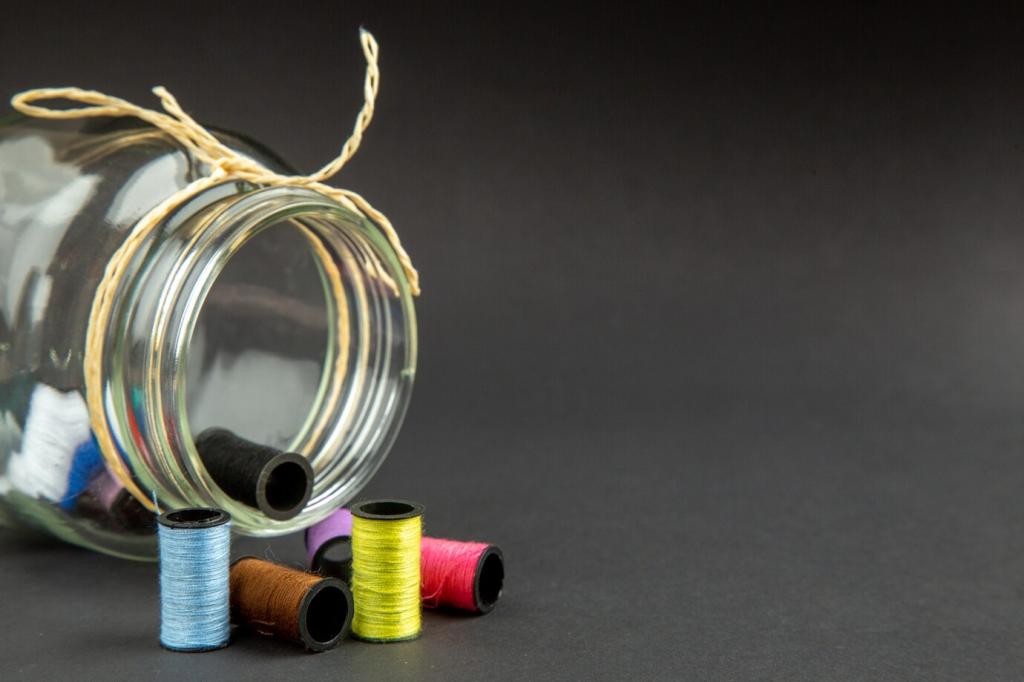
Eco-Friendly Textile Recycling Techniques
Discover how sustainable approaches in textile recycling are reshaping the fashion industry while promoting environmental stewardship. As global demand for clothing rises, so does textile waste—posing significant ecological challenges. Eco-friendly textile recycling techniques present innovative and responsible alternatives, transforming waste into valuable resources. On this page, explore the advanced processes, their positive environmental impact, and the collaborative efforts moving us closer to a circular textile economy.
Introduction to Textile Recycling
The rapid increase in textile production over the past decades has resulted in surplus waste that challenges traditional disposal methods. Modern consumers buy more clothing than ever, often discarding items after minimal use. As a result, landfill sites are overwhelmed, releasing environmentally harmful chemicals and microfibers. Addressing this issue by recycling textiles mitigates ecological strain, offering a purposeful route to sustainability. By recognizing the urgency, stakeholders can develop scalable solutions that address both current and future waste.

Mechanical Recycling Processes
Fiber Recovery Techniques
Mechanical fiber recovery involves shredding textiles into their constituent fibers, which are then cleaned and processed. This method successfully reclaims cotton, wool, and polyester from post-consumer clothing, textile offcuts, or manufacturing scraps. By carefully sorting and controlling the input quality, the process preserves fiber length and strength for use in new yarns. While each successive recycling round can reduce fiber quality, ongoing technological advancements are increasing yield and consistency, making mechanical recovery a reliable solution for many garment types.
Re-Spinning and Yarn Production
After fiber extraction, the next step involves carding—the alignment of fibers into a parallel arrangement—followed by spinning them into new yarns. Advances in spinning technology allow even short or blended fibers to be repurposed efficiently. Re-spun yarns are used in the production of everyday items such as jeans, t-shirts, and upholstery fabrics. While the resulting yarn may sometimes incorporate a blend of virgin and recycled materials to ensure durability, the overall resource savings and reduced environmental impact make this method highly advantageous.
Limitations of Mechanical Methods
Despite its advantages, mechanical recycling has inherent limitations, particularly concerning fiber degradation and contamination. Each cycle through the mechanical process shortens and weakens fibers, which can limit their future applications. Mixed fiber fabrics, trims, and embellishments can also complicate the recycling stream, requiring meticulous sorting or resulting in reduced material quality. These challenges highlight the need for continuous innovation and complementary recycling techniques that can further extend fiber life and application scope.

Chemical Recycling Advances
Depolymerization Techniques
One of the most promising chemical recycling methods is depolymerization, where polymers such as polyester are broken back down into monomers. These monomers are then repolymerized to create high-quality fibers identical to those made from petrochemicals but with a significantly smaller environmental footprint. This approach enables multiple recycling cycles without notable quality loss and can handle garments made from mixed blends, further enhancing resource efficiency and closing the textile loop.
Eco-Solvent Based Processes
Eco-friendly solvents now enable separation and recycling of cellulose-based fibers such as cotton and viscose. Innovations like the use of ionic liquids and enzymatic catalysts dissolve fabric structures gently, extracting cellulose for redevelopment into new threads. Unlike some traditional chemical methods, these processes avoid toxic byproducts and require less energy, dramatically reducing their environmental impact. As research continues, scalable eco-solvent methods promise to unlock even more recycling potential in the industry.
Challenges in Chemical Recycling
While chemical recycling offers many advantages, it faces hurdles such as high costs, technological complexity, and the need for meticulous sorting. Differentiating between similar-looking synthetic and natural fibers is essential for process efficiency. Furthermore, scaling up chemical recycling facilities requires substantial investment and regulatory support. Despite these obstacles, ongoing innovations and growing investment are helping chemical recycling become an essential player in the drive for circular fashion and sustainable resource use.
Innovations in Textile Sorting
01
Automated Material Identification
Emerging technologies use near-infrared spectroscopy and hyperspectral imaging to instantly identify fiber types within mixed textile batches. Automated lines can distinguish cotton from polyester, or wool blends from synthetic mixes, greatly increasing sorting speed and reducing the risk of human error. By ensuring that only suitable materials enter specific recycling streams, these systems enhance fiber recovery rates and the quality of recycled end-products, setting a new standard for efficiency in textile waste management.
02
Artificial Intelligence and Machine Learning
Machine learning algorithms are revolutionizing textile sorting by learning to recognize subtle differences in fabrics, colors, and even garment construction. As these AI systems process vast streams of data, they become more adept at guiding robotic arms to pick, separate, and direct items appropriately. This sophisticated approach reduces the manual labor required, cuts operational costs, and leads to more uniform batches for mechanical or chemical recycling—helping processors achieve better environmental and economic outcomes.
03
Overcoming Contamination Risks
Contamination from buttons, zippers, and unfamiliar fiber blends poses ongoing challenges for textile recycling. Innovations in pre-sorting and cleaning processes, combined with the latest sensor technologies, are overcoming these barriers. Improving contamination management not only increases recycled material purity but also lowers wear and tear on machinery. Continued advancements in this area will play a vital role in ensuring that textile recycling delivers its promised environmental benefits at scale.
Previous slide
Next slide

Integrated Processing Lines
Today’s leading recycling facilities operate complex, integrated processing lines capable of handling multiple material types. Sorting, cleaning, shredding, and chemical treatment happen in succession, maximizing resource recovery. Advanced monitoring systems ensure high product quality, while energy-efficient equipment minimizes operational emissions. By consolidating diverse recycling capabilities under one roof, facilities drive economies of scale and set new benchmarks for sustainability in industry practice.

Partnerships and Supply Chain Integration
Industrial textile recycling thrives on strong collaboration across the supply chain. Brands, collectors, waste managers, and recyclers work together to streamline logistics, improve feedstock quality, and build reliable markets for recycled fibers. Such partnerships foster transparency, traceability, and shared responsibility, ensuring that sustainable practices are embedded throughout the textile lifecycle. By forging these alliances, the industry can move decisively toward a circular and regenerative future.
Policy and Regulatory Support
Extended Producer Responsibility (EPR)
EPR policies mandate that producers are accountable for their products throughout their lifecycle, including post-consumer management. Under these frameworks, brands must facilitate collection, sorting, and recycling of used textiles, either directly or through partnerships. EPR incentivizes design for recyclability and investment in recycling infrastructure, ensuring that environmental impact is minimized from source to end-of-life. Adoption of EPR standards across more markets is crucial to scaling sustainable textile management globally.
Eco-Labeling and Standards
Eco-labels and certification schemes provide clarity for consumers seeking truly eco-friendly textile products. Such standards outline specific criteria for recycled content, chemical safety, and production methods. Third-party verification helps ensure transparency and trust while guiding brands toward best practices in recycling and circularity. As demand for sustainable fashion grows, eco-labels will play a pivotal role in driving market competitiveness and advancing industry sustainability goals.
International Collaboration and Policy Alignment
Global textile supply chains cross borders, making international collaboration vital for effective recycling systems. Policy harmonization, technology sharing, and capacity building between nations enable large-scale, consistent improvements in textile management. International organizations and agreements foster alignment on waste reduction targets, financing, and research efforts. Such cross-border cooperation is essential for realizing the full potential of eco-friendly textile recycling in a connected world.
